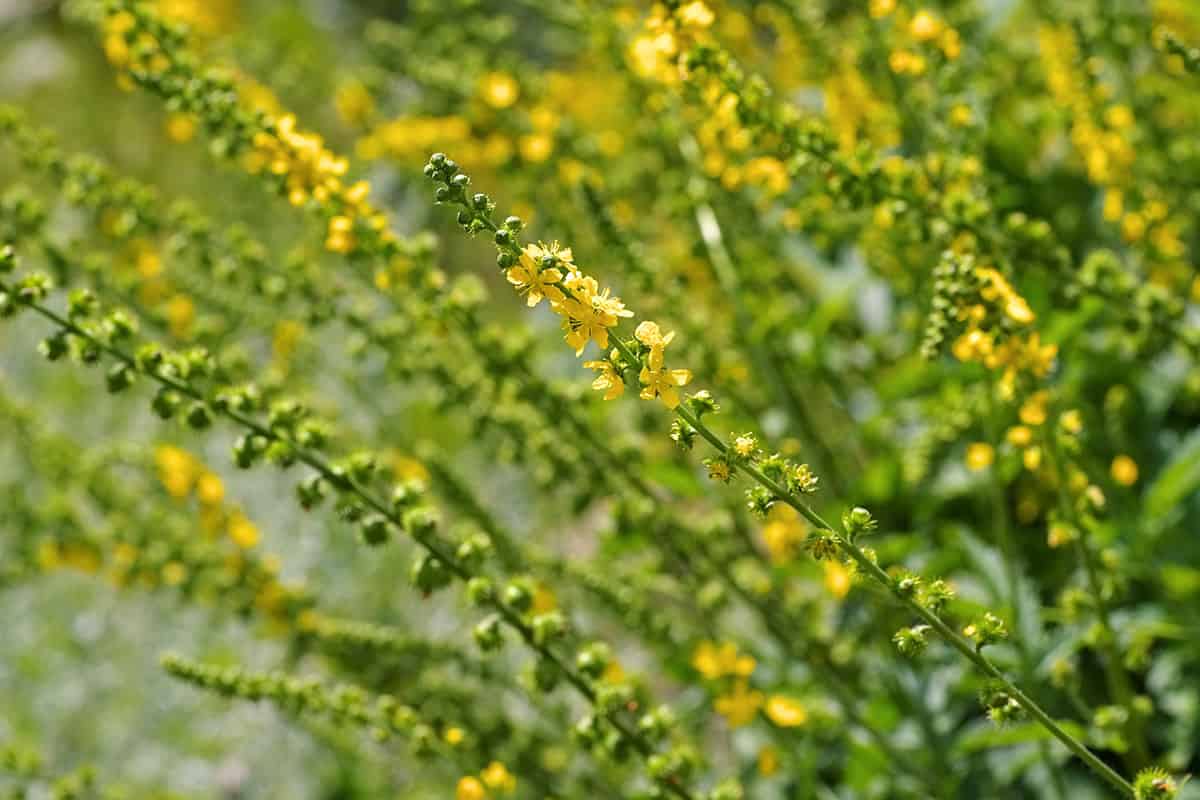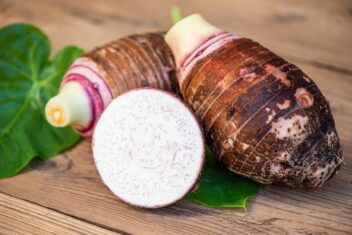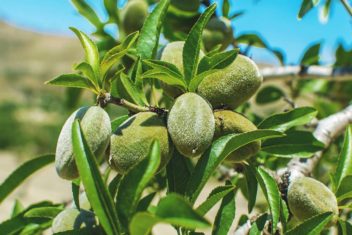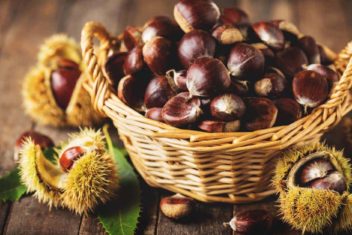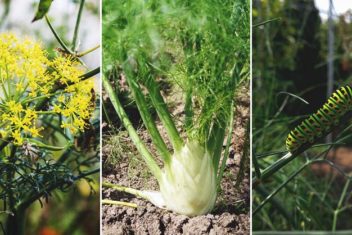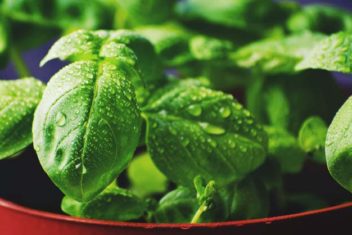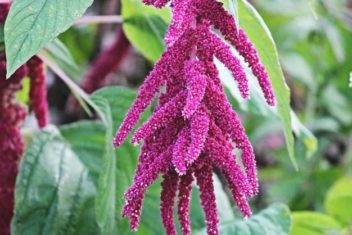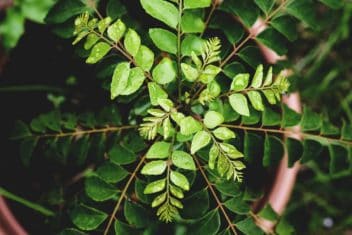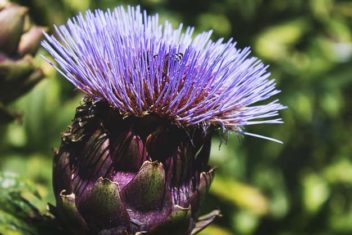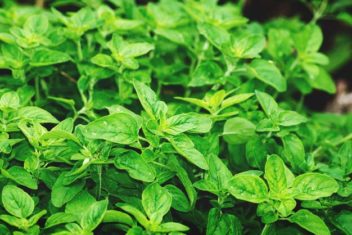If you’re growing a medicinal herb garden, then agrimony is an invaluable addition. This easy-to-grow plant has been used as a cure-all for centuries, as well as a dye. Personally, I consider this to be one of the most important herbs I grow.
Even if you don’t plan to use it for dye or medicine, it’s a sunny and bright addition to the garden that doesn’t ask for much from you to thrive. Ready to dig in?
What is Agrimony?
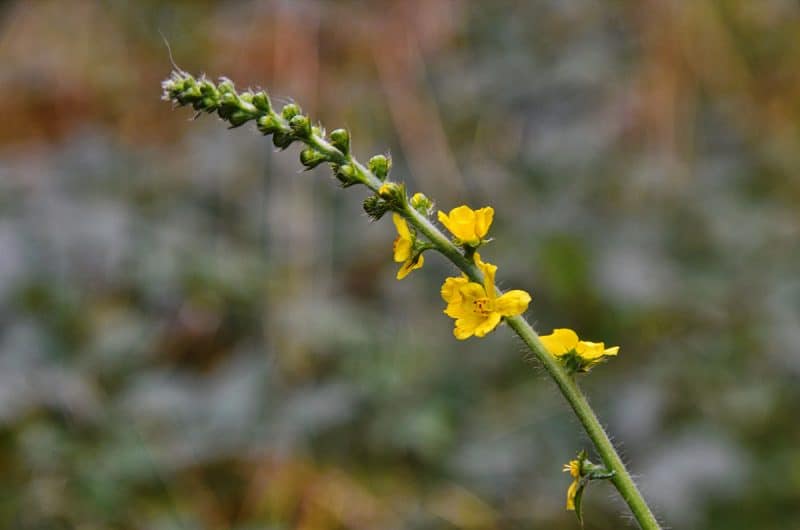
Common agrimony (Agrimonia Eupatoria) is a perennial herb that is part of the rose family. It has a long history of medicinal uses all around the world. Agrimony has been used by the Greeks, who treated everything from eye complaints and diarrhea to liver and kidney ailments. It was also used to create a yellow dye.
It was mixed with milk in the Middle Ages and used as a wound healer, and made into a tea to be used as a spring tonic.
When agrimony was introduced to North America, the local indigenous population used it to treat fevers.
If you want to learn about this amazing medicinal herb – otherwise known as liverwort, church steeples, philanthropos, and sticklewort – then let’s dive in. It will become your most important herb too.
By the way, don’t confuse this plant with hemp agrimony (Eupatorium cannabinum), which is a plant in the daisy family.
Varieties of Agrimony
Although common agrimony is the one you’ll usually come across – especially in the wild – there are some other native varieties in North America as well.
- A. Gryposepala: This is a small plant used by native Americans for a variety of health issues.
- A. Parviflora: Sometimes called swamp agrimony, it is a small version that found in many wetlands in North America.
- A. Pubescens: This variety grows naturally in wetlands, but is also suited for dry areas.
- A. Striata: This is one of the larger varieties, growing to about 40 inches. It has a larger cluster of flowers compared to others.
How to Plant Agrimony
Agrimony grows best in USDA zones 6 to 9. It loves full sun and soil that drains well. Partial shade is okay, as long as the plant receives more sun than shade throughout the day.
Being a plant that isn’t too fussy, agrimony will grow in most soils, but if you really want to maximize its growth, aim for a pH of between 6.0 and 7.0. Work in some well-rotted compost to your soil to improve drainage and water retention before planting.
Planting Seed
I’ve found agrimony a reliable enough germinator that you can plant directly in the garden. Do this in the fall so that the plants will emerge in the spring once the last of the winter frost is over. Agrimony needs that cold spell to be able to germinate.
You can also sow seeds inside about eight weeks before your predicted last frost. Because of the need for a cold spell to germinate, the seeds need to be cold stratified as if they were outside in the winter. Don’t worry, though. This is an easy process to mimic.
Fill a small container with moist seed raising mix. Plant the seed 1/4 of an inch deep and press down gently. Cover with a plastic bag and put it in the refrigerator for around a month. Check it regularly to make sure the soil doesn’t dry out. Spray it gently if it needs moisture.
The next step is to remove it from the refrigerator and take it out of the bag. Place the container in a sunny position and keep moist. You should see germination within 14 days or fewer.
Once the last expected frost date has passed, transplant outside in your garden. Plant it deep so that the foliage is level with the soil. Agrimony grows to around three feet wide and needs to be planted with space to spread. Water well for the first few weeks, making sure the soil doesn’t dry out.
Propagating From Roots
Although germinating seeds of agrimony is easy, you can also propagate from roots. Simply dig up an existing plant and cut a section of root about 3 inches in length. Replant the mother plant straight away.
Lay the root on the surface of a pot of seed-raising mix and cover lightly. Spray with a spray bottle and cover with plastic. Make sure you don’t put this in full sun, or it will get too hot. Bright, indirect light is best.
Check regularly and make sure the soil doesn’t dry out. Within a few weeks, you should see shoots. Each of these shoots should form its own roots and you can divide the plants.
Transplant once they have a few leaves and are at least four inches tall.
Growing in Containers
Agrimony grows well in a container, like most herbs. Make sure you use a medium that holds moisture but drains well.
Place the container in the sun and use an extended-release, container-specific fertilizer. Depending on the size of the container, agrimony generally doesn’t grow as big in pots as it does in the garden.
Caring for Agrimony
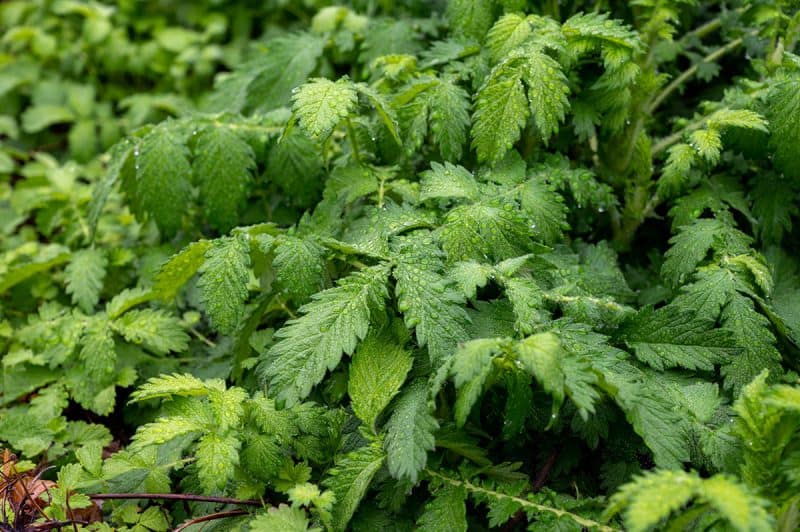
Because agrimony often grows in the wild, it’s adept at growing without too much intervention. There is no real need to fertilize unless it’s struggling or growth is stunted.
Dig in a balanced, extended-release fertilizer and water well. If your agrimony is young, use a liquid fertilizer.
Water your young agrimony plants well until they are established. I usually start out watering twice a week during summer. Once they are growing well, just water when the top two inches of soil is dry or the plant shows signs of needing it (such as wilting or browning leaf tips).
Companion Planting for Growing Agrimony
Agrimony suits being planted with other perennials such as:
- Rosemary
- Thyme
- Sage
- Chives
- Oregano
- Lavender
- Lovage
Common Problems and Solutions for Growing Agrimony
Although generally fuss-free, agrimony does suffer from a few common pests and diseases, especially if neighboring plants are suffering too.
Root Rot
If your agrimony looks like it’s struggling despite water and fertilizer, it may have root rot. If a plant is suffering from root rot, it can’t take up nutrients from the soil.
Foliage and shoots die back and soon the whole plant succumbs. Once it sets in, root rot is usually fatal.
The best treatment is prevention. Don’t overwater your garden and if the soil doesn’t drain well, try adding well-rotted organic matter to see if you can improve it.
Don’t plant in low or shady areas of your garden if water pools there.
Powdery Mildew
I got powdery mildew on my agrimony because I over-watered them and got water on the foliage.
It’s highly contagious and spread by spores, so it’s hard to prevent, but there are good ways to treat it. Read our article on how to handle this annoying fungus.
Aphids
Aphids love everything, and agrimony is on their menu as well. They’re sapsuckers and leave behind a substance called honeydew, which attracts sooty mold. When they invaded my agrimony, I noticed that although they didn’t attack in huge numbers, the plant quickly looked weak and wilted.
Read our in-depth article on how to identify, prevent and get rid of aphids.
Blossom or Gall Midge
These little bugs cause a reasonable amount of damage to agrimony. They can stop flowers blooming and often cause knot-like bulges on the plant.
Midges are tiny, and you’ll likely not see them, but you will see the damage they cause. Their larvae feed inside unopened flowers and cause them to be deformed or to fail to bloom at all.
The maggots of some of the midges feed on plant tissue, causing unsightly knots to form.
It’s hard to control the species of midge that feed on agrimony with insecticides because they are deep within the plant. The most effective way to control them is to remove any flower buds that are deformed and any parts of the plant with knotty galls.
I use neem oil preventatively on any plants that bugs want to eat just to make them unpalatable.
Harvesting and Using Agrimony
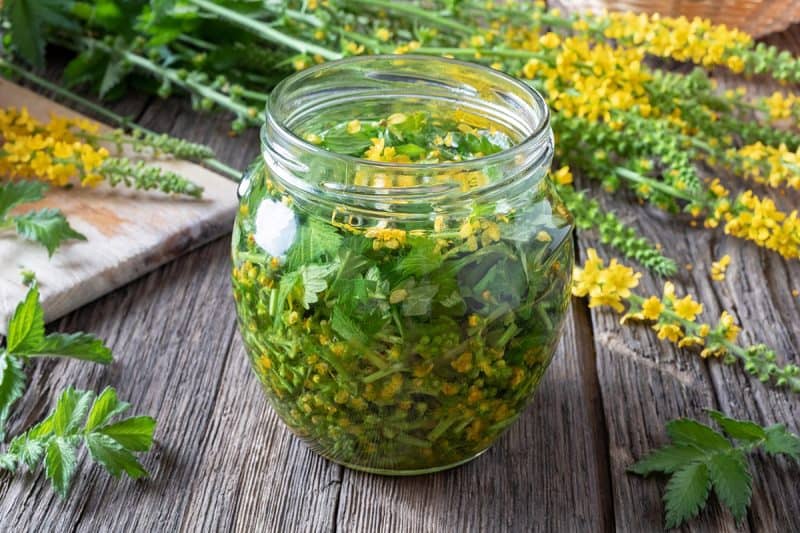
This is where the value of agrimony really shines. Although it’s lovely in the garden, it has a lot of healthy uses and can be made into teas, infusions, topical ointments, and used in baths.
Harvest mid-summer or just before the flowers bloom. You can harvest a few leaves at a time and dry them as you need them. I prefer to cut the whole plant and hang it upside down to dry. Both the flowers and the leaves can be used.
Agrimony tinctures and teas are often used to treat fevers, colds, skin conditions, stomach and intestinal issues, and sore throats. Studies show that agrimony has antioxidant and anti-inflammatory properties.
